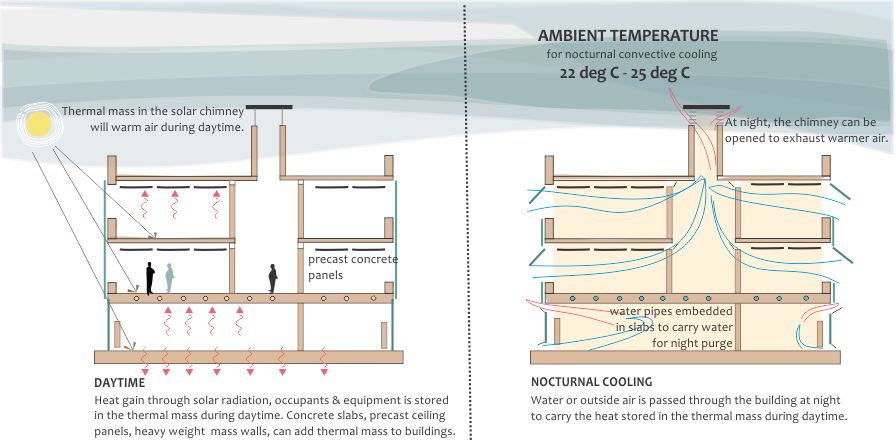Thermal mass helps to store heat within the building structure and moderate fluctuations in the indoor temperature. This heat storing capacity of building material helps in achieving thermal comfort for occupants by providing time delay. Hence, choosing appropriate building materials can largely effect the level of comfort within buildings. To meet NZEB design parameters, selection of building materials hold utmost importance in modulating indoor temperatures and hence reducing conventional energy loads.
Mass and density of a building material affects this heat storing capacity in buildings. High density materials such as concrete, bricks and stone have high thermal mass, while materials such as wood or plastics have low thermal mass. The efficacy depends on the placements of these elements with respect to direct irradiation of the sun.

















